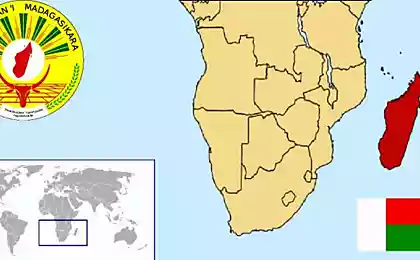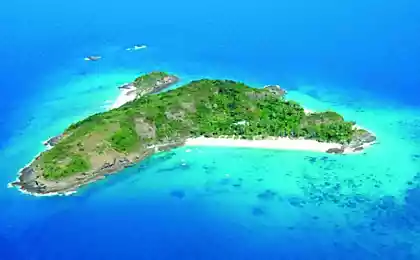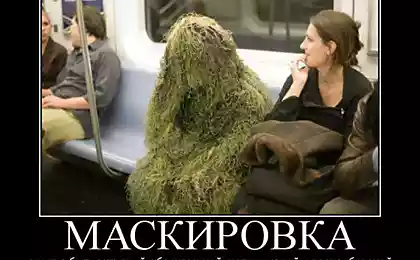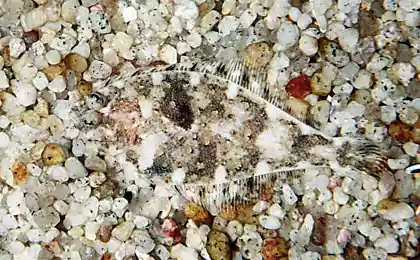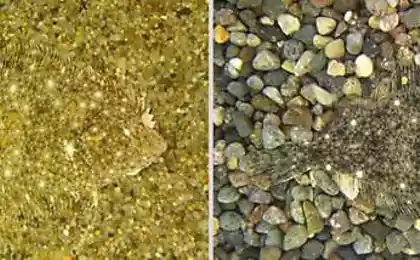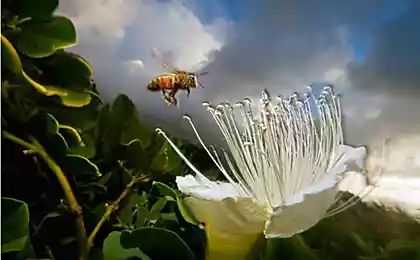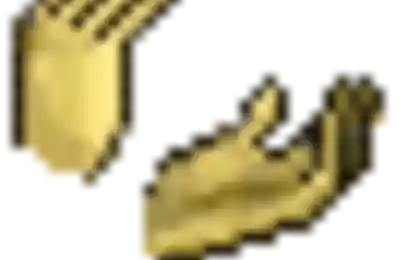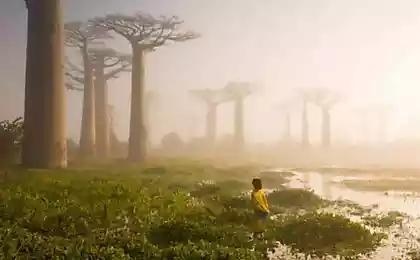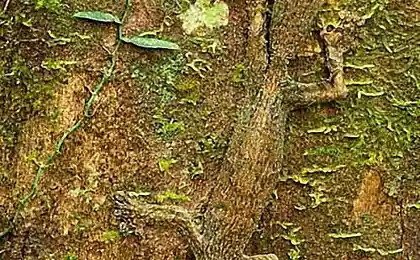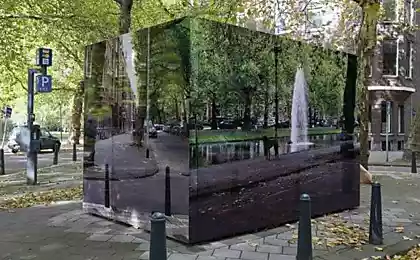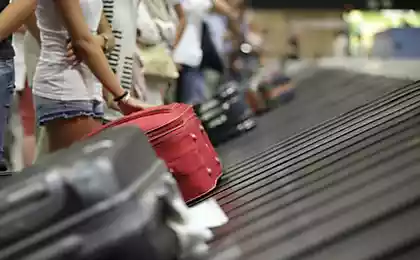2151
Listohvosty Madagascar gecko
The ability to simulate fallen leaves these unique reptiles inhabiting the primeval forests of Madagascar, has no equal - twisted trunk with protruding veins, flat tail like a rotting or eaten by insects leaf leaves little chance for predators wanting to eat meat ploskohvostogo gecko.
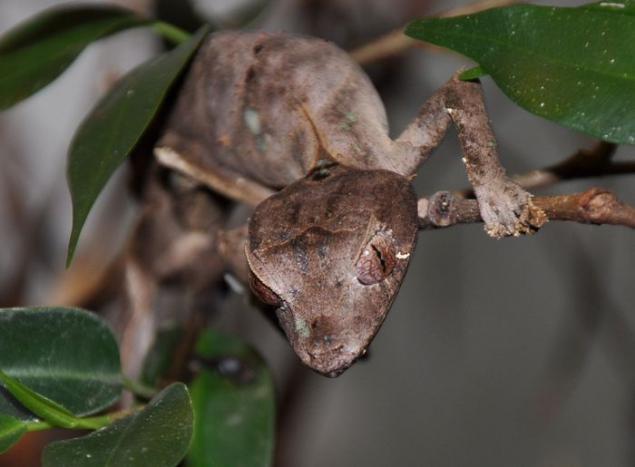

Madagascar gecko ploskohvostogo (lat. Uroplatus phantasticus), the smallest of the twelve species of geckos ploskohvostyh, without exaggeration be called a consummate master of camouflage.


These kids can be orange, brown, yellow, red, but, regardless of color, their color are always shades of brown. Lives fantastic gecko in fallen leaves, and under the bushes (up to 1 m). At night, are actively looking for food on the forest floor, the day may be a few hours to sit still, pretending to be dead leaves.


Another name of this lizard - satanic listohvosty gecko - speaks not only of unusual appearance, but also the diversity of behavior. In his arsenal are many cunning tricks that make it easy to get rid of any predator. For example, to reduce the shadow cast by him, satanic gecko is pressed to the ground, becoming almost as flat as any dried leaf, but in order to frighten the enemy, his mouth wide open, showing the bright red mouth with sharp teeth. In addition to this, if necessary, easily throw the gecko's tail, leaving pursuing its predator with what.
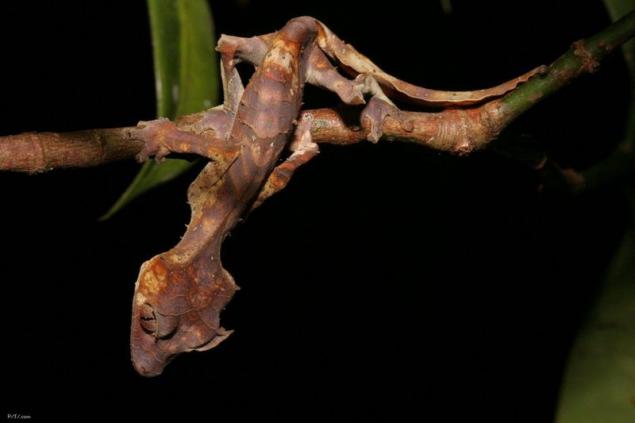
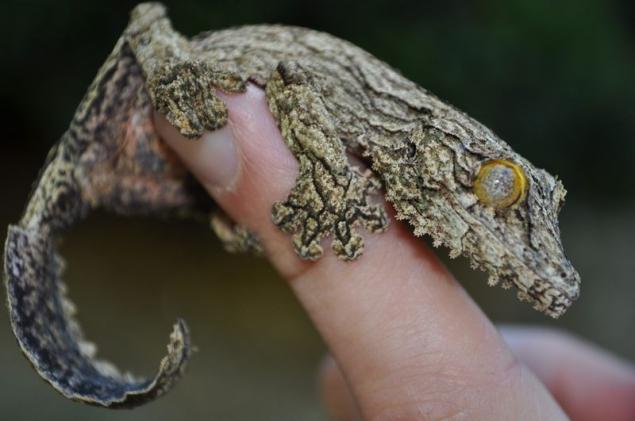
Ploskohvosty gecko Henkel. - (Uroplatus henkeli) Grows to 28 cm, one of the largest species of the genus. And one of the rarest. Coloring animal is extremely variable. Most have a beige or gray color, but at the same time there are individuals almost white with chocolate stripes. Have limited ability to change color depending on your mood, changes in temperature or light. Ploskohvosty gecko Henkel has a large triangular-shaped head, with large eyes, thin limbs, skin flaps around the edges of the head and body, flat tail.

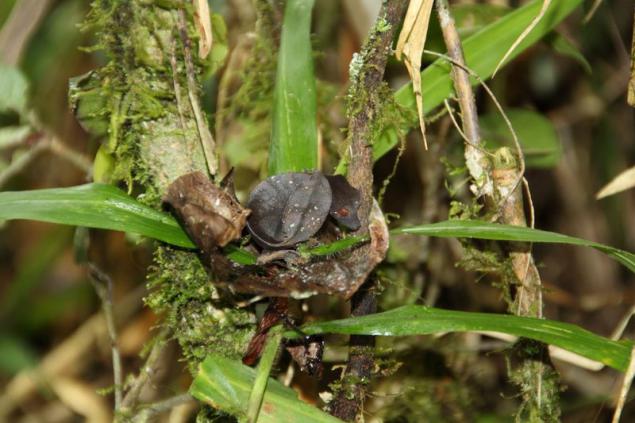
Sizes range from 30 uroplatusov-48 cm. - Is the largest to 10, 16 cm. Most of the animals spend the day sprawled on tree trunks, sometimes upside down, simulating the bark on the trunk of the tree, while the smaller species (U . phantasticus and U. ebenaui) hiding in the bushes figs, representing the branches and leaves of the plant. At night, they leave the place of rest, and go in search of prey - all kinds of insectivores.
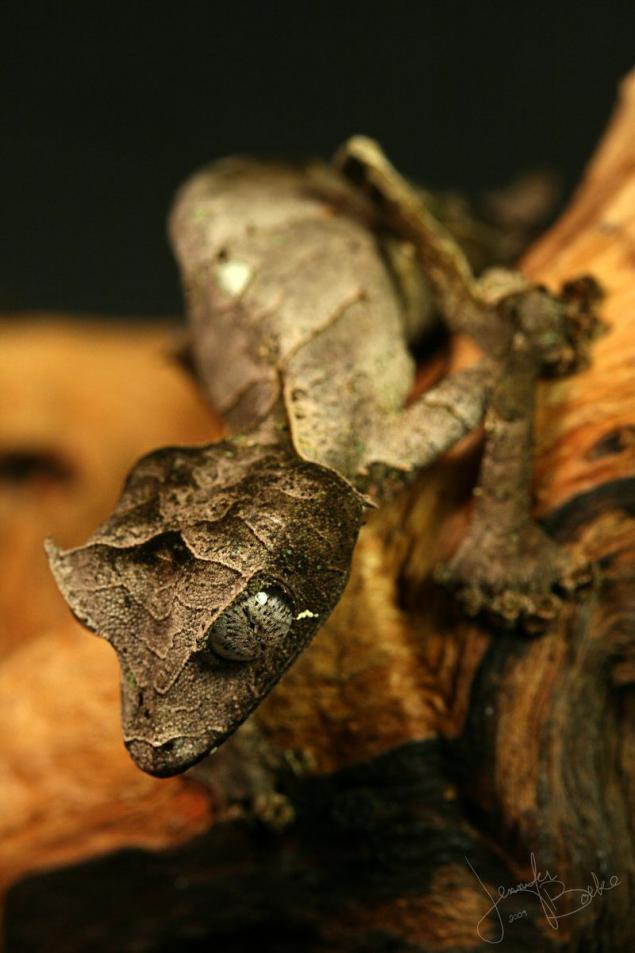
Ploskohvostye geckos live on the island of Madagascar and the surrounding small islands. The destruction of the usual habitat, burning forests, the capture and expulsion from their territory of animals not so great results in a rapid reduction in their numbers. And if there is a threat of extinction of species it is probably very important to increase the number of animals bred in captivity, though only uroplatusy Henkel (U.Henkel) well reproduce offspring at home.
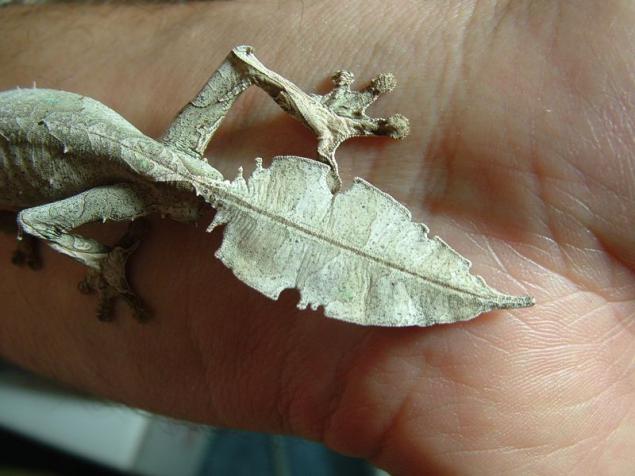
This species is named after the German herpetologist Frederick William Henkel. They live in the rainforests of the north-west of Madagascar, are often found near a stream in the branches of trees (2-6 cm wide) at a height of 1-2 m from the ground, down to the ground only to lay their eggs in the soil. With a total length of 290 mm is considered one of the leading representatives of this genus. The color is very variable. At night, clearly visible color differences between the sexes: males have a bright pattern on a dark background (brown to black). Females on the contrary, are dark spots on a white background. Head large, flattened on the lower jaw.
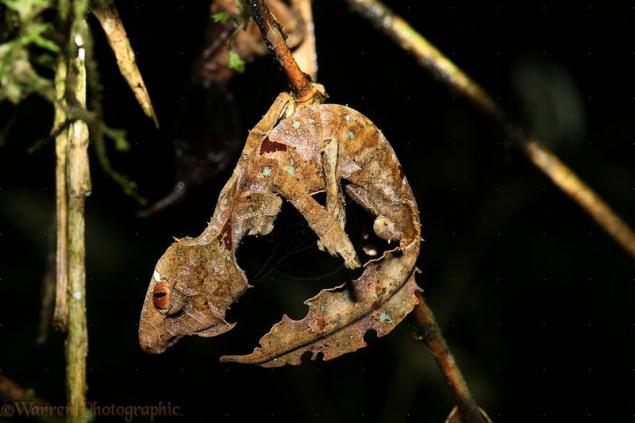
And sometimes Ploskohvosty gecko Gunther - (Uroplatus guentheri) This gecko grows to 15 cm. For the first time this species was discovered in 1908. Settle, usually in the low trees and bushes, not more than 3 meters above the ground. Their color varies depending on the environment, but on the whole it shades from dark brown to light brown. Lovely camoufleur, they can not be distinguished from the branches on which they were hiding.
The line ploskohvosty gecko - (Uroplatus lineatus) is 27 cm. The body goes lengthwise strips, glazf okrashens in body color. Do not be distinguished from the dried-up bitch. An interesting feature of this gecko is that it changes color depending on the time of day by day it is light yellow with darker longitudinal stripes, and at night - dark brown with elongated lighter stripes; some individuals may have white stripes
Ploskohvosty gecko Ebenaui - (Uroplatus ebenaui) This form can be from dark chocolate brown to light beige. Some geckos can even be red, burgundy or orange. Many individuals body in varying degrees reticulated.
This species of gecko is the smallest and grows up to 10 cm. Characteristic for them is that the tail is short and resembles a flat spoon. With the threat of some geckos Ebenaui released forelegs with branches and hang on his hind legs very accurate imitation of dry leaves.
Mossy gecko ploskohvosty - (Uroplatus sikorae) walking pincushion moss. Along the edges of the body gecko has a fringe of the outgrowths of this trick allows you to get rid of the treacherous shadows. Lizard fully merges with the bark of trees. Also, Mossy gecko is able to change the color of the skin, adjusting to the substrate. This species is quite large, 15-20 cm (without the tail).
Most of them have color from gray-brown to black or greenish-brown color with a variety of stains, imitating tree bark or moss.
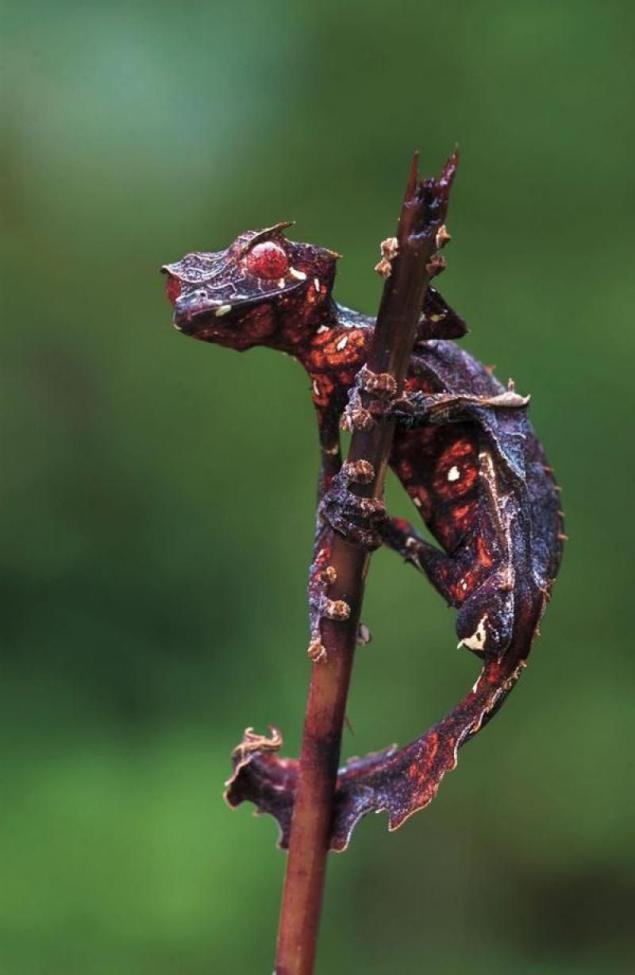
Ploskohvostye geckos are a striking example of cryptic (patronizing) color. And even more, not only is their skin color and texture of the surrounding objects (leaves, bark, covered with moss), but also parts of the body are outgrowths and outgrowths, increasing the similarity with the background. All these tricks help to hide from predators day.
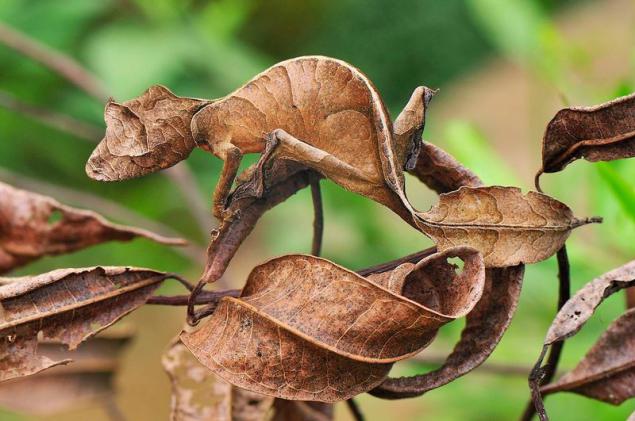
Currently, due to the reduction of the area of tropical forests ploskohvostye geckos are found in nature less and less, and already there is a danger of their extinction. But the experience of successful captive breeding gives hope that these rare species are widespread in terrariums lovers.
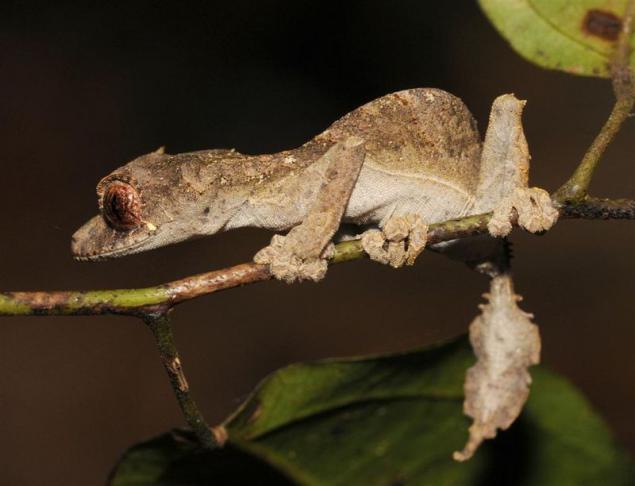

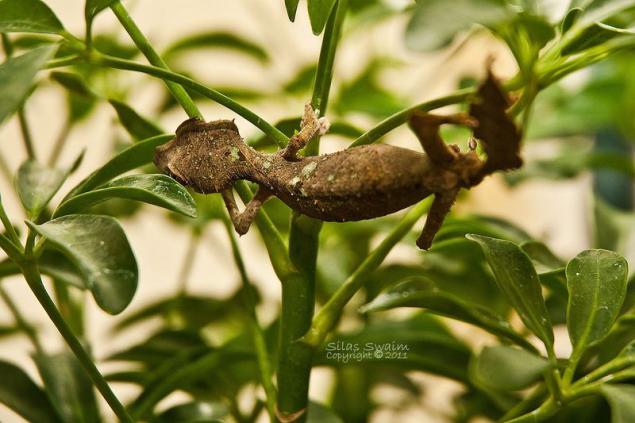
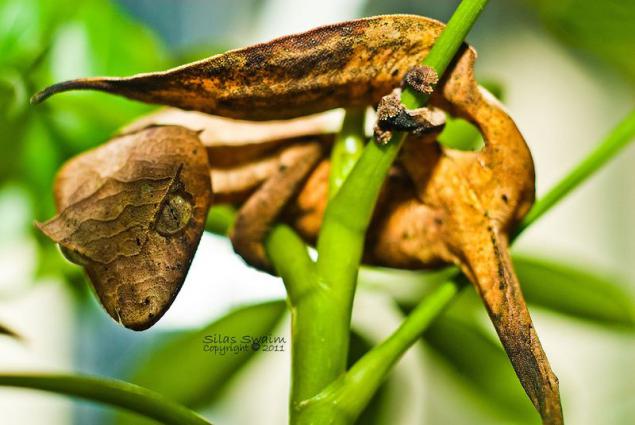
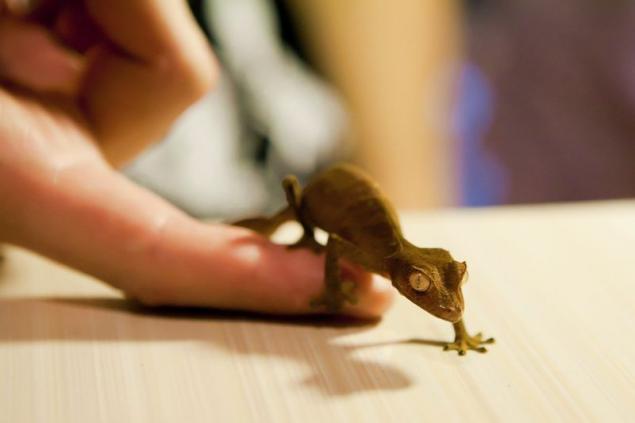
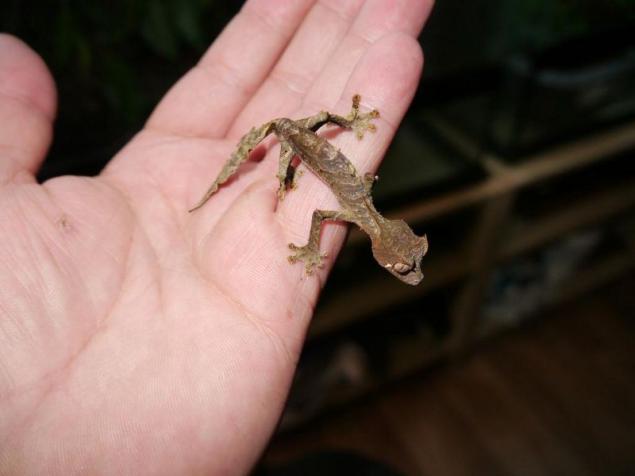
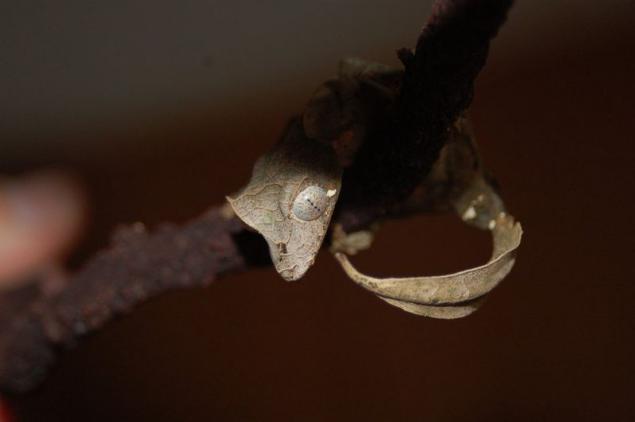
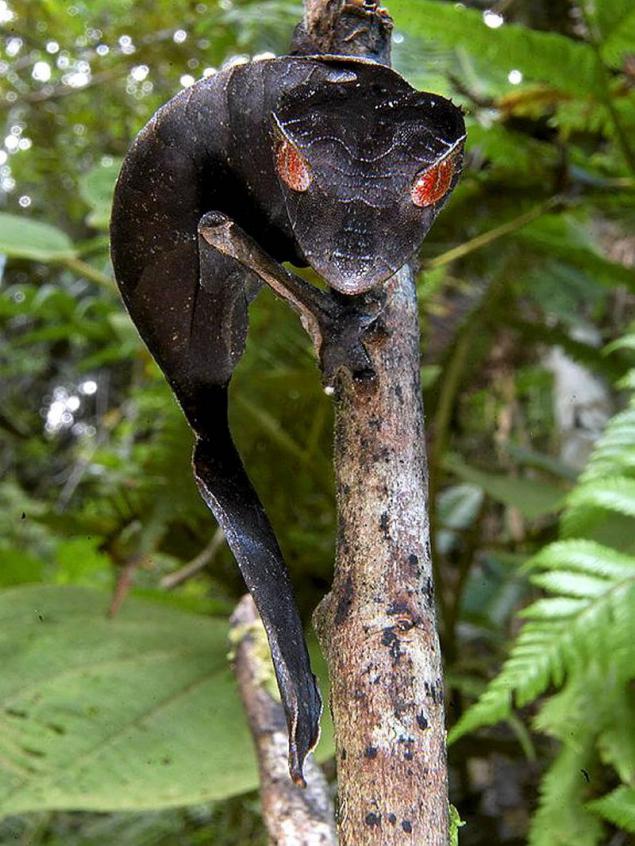
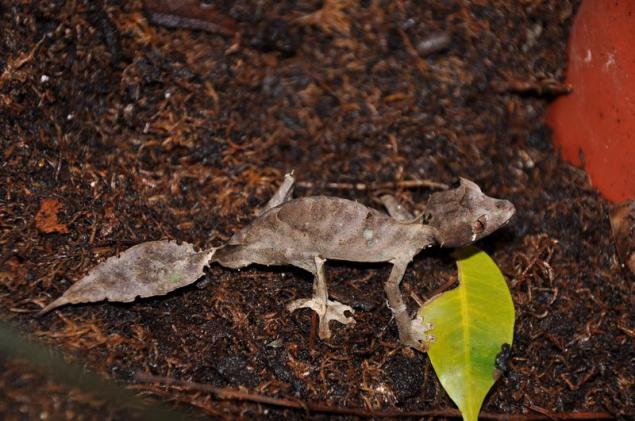

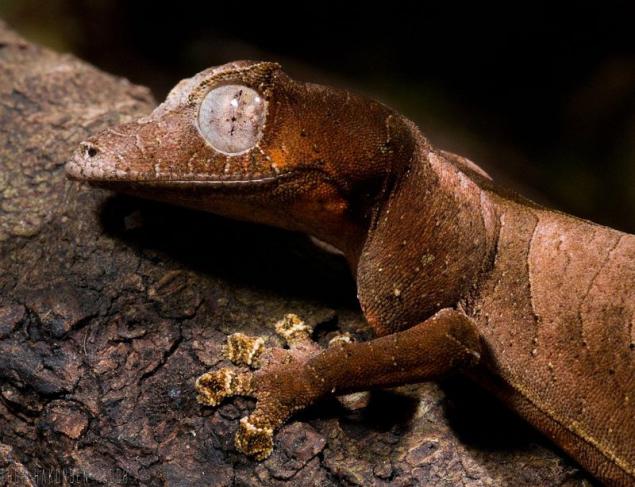

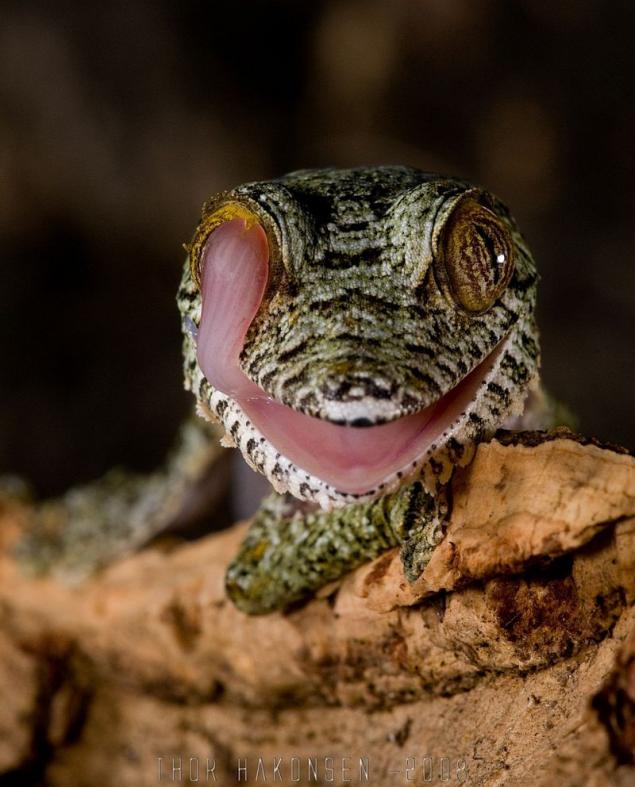
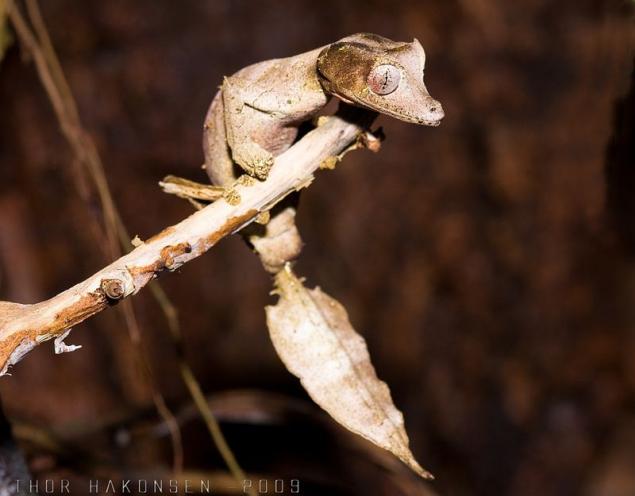

Source: masterok.livejournal.com


Madagascar gecko ploskohvostogo (lat. Uroplatus phantasticus), the smallest of the twelve species of geckos ploskohvostyh, without exaggeration be called a consummate master of camouflage.


These kids can be orange, brown, yellow, red, but, regardless of color, their color are always shades of brown. Lives fantastic gecko in fallen leaves, and under the bushes (up to 1 m). At night, are actively looking for food on the forest floor, the day may be a few hours to sit still, pretending to be dead leaves.


Another name of this lizard - satanic listohvosty gecko - speaks not only of unusual appearance, but also the diversity of behavior. In his arsenal are many cunning tricks that make it easy to get rid of any predator. For example, to reduce the shadow cast by him, satanic gecko is pressed to the ground, becoming almost as flat as any dried leaf, but in order to frighten the enemy, his mouth wide open, showing the bright red mouth with sharp teeth. In addition to this, if necessary, easily throw the gecko's tail, leaving pursuing its predator with what.


Ploskohvosty gecko Henkel. - (Uroplatus henkeli) Grows to 28 cm, one of the largest species of the genus. And one of the rarest. Coloring animal is extremely variable. Most have a beige or gray color, but at the same time there are individuals almost white with chocolate stripes. Have limited ability to change color depending on your mood, changes in temperature or light. Ploskohvosty gecko Henkel has a large triangular-shaped head, with large eyes, thin limbs, skin flaps around the edges of the head and body, flat tail.


Sizes range from 30 uroplatusov-48 cm. - Is the largest to 10, 16 cm. Most of the animals spend the day sprawled on tree trunks, sometimes upside down, simulating the bark on the trunk of the tree, while the smaller species (U . phantasticus and U. ebenaui) hiding in the bushes figs, representing the branches and leaves of the plant. At night, they leave the place of rest, and go in search of prey - all kinds of insectivores.

Ploskohvostye geckos live on the island of Madagascar and the surrounding small islands. The destruction of the usual habitat, burning forests, the capture and expulsion from their territory of animals not so great results in a rapid reduction in their numbers. And if there is a threat of extinction of species it is probably very important to increase the number of animals bred in captivity, though only uroplatusy Henkel (U.Henkel) well reproduce offspring at home.

This species is named after the German herpetologist Frederick William Henkel. They live in the rainforests of the north-west of Madagascar, are often found near a stream in the branches of trees (2-6 cm wide) at a height of 1-2 m from the ground, down to the ground only to lay their eggs in the soil. With a total length of 290 mm is considered one of the leading representatives of this genus. The color is very variable. At night, clearly visible color differences between the sexes: males have a bright pattern on a dark background (brown to black). Females on the contrary, are dark spots on a white background. Head large, flattened on the lower jaw.

And sometimes Ploskohvosty gecko Gunther - (Uroplatus guentheri) This gecko grows to 15 cm. For the first time this species was discovered in 1908. Settle, usually in the low trees and bushes, not more than 3 meters above the ground. Their color varies depending on the environment, but on the whole it shades from dark brown to light brown. Lovely camoufleur, they can not be distinguished from the branches on which they were hiding.
The line ploskohvosty gecko - (Uroplatus lineatus) is 27 cm. The body goes lengthwise strips, glazf okrashens in body color. Do not be distinguished from the dried-up bitch. An interesting feature of this gecko is that it changes color depending on the time of day by day it is light yellow with darker longitudinal stripes, and at night - dark brown with elongated lighter stripes; some individuals may have white stripes
Ploskohvosty gecko Ebenaui - (Uroplatus ebenaui) This form can be from dark chocolate brown to light beige. Some geckos can even be red, burgundy or orange. Many individuals body in varying degrees reticulated.
This species of gecko is the smallest and grows up to 10 cm. Characteristic for them is that the tail is short and resembles a flat spoon. With the threat of some geckos Ebenaui released forelegs with branches and hang on his hind legs very accurate imitation of dry leaves.
Mossy gecko ploskohvosty - (Uroplatus sikorae) walking pincushion moss. Along the edges of the body gecko has a fringe of the outgrowths of this trick allows you to get rid of the treacherous shadows. Lizard fully merges with the bark of trees. Also, Mossy gecko is able to change the color of the skin, adjusting to the substrate. This species is quite large, 15-20 cm (without the tail).
Most of them have color from gray-brown to black or greenish-brown color with a variety of stains, imitating tree bark or moss.

Ploskohvostye geckos are a striking example of cryptic (patronizing) color. And even more, not only is their skin color and texture of the surrounding objects (leaves, bark, covered with moss), but also parts of the body are outgrowths and outgrowths, increasing the similarity with the background. All these tricks help to hide from predators day.

Currently, due to the reduction of the area of tropical forests ploskohvostye geckos are found in nature less and less, and already there is a danger of their extinction. But the experience of successful captive breeding gives hope that these rare species are widespread in terrariums lovers.















Source: masterok.livejournal.com

